ASUS at Computex 2016: The 10 Years of the Republic Of Gamers (ROG) Booth Tour
by Ian Cutress on June 22, 2016 8:00 AM ESTWhen you’ve been reviewing and testing motherboards, as well as shouting at certain engineers for absolutely nonsense ideas (or really good ones), there is somewhat a monotony to it all. One generation there’s a new feature from one manufacturer, and the next generation we see it on mostly all the others. Some features are special and aren’t copied, but these require larger amounts of R&D and investment, then require the PR teams to communicate why the new feature is good or not.
One interesting conversation I had a couple of years ago was regarding the future of motherboard form factors. It was then as we see now: the full sized ATX, micro-ATX and mini-ITX systems accounted for 99%+ of desktop class PCs. Some large OEMs had their own designs on desktops, Zotac has a number of small mini-PCs for various markets, and servers do all sorts of standard and non-standard sizes, but for consumer, it is essentially all about those three (and mini-STX is now moving in to that space). So a couple of years ago, when the initial talk of Steam machines was coming in to play, ASUS asked me what I thought about non-standard motherboard sizes in desktop sized systems.
It should be clear to most that the motherboard size issue is a chicken/egg situation. When Intel designs a CPU, there are certain limitations to where everything should go. Or no, I will correct that – there’s a budget limitation to where things can go. For example, memory is often to a certain side of the CPU because that provides the best quality signal for the onboard traces. Technically it can go on a different side (as it does on some designs), but that often requires more motherboard PCB layers to ensure the signal does not degrade or interfere with other signals, and in most cases there is a performance/latency penalty if you have to put it further away. But in order to stay buoyant, a motherboard manufacturer will stick to the appropriate design, because guess what – all the cases use the same standards too. The minute you produce a novel motherboard design, such as a different IO position or a new method for storage, none of the current cases on the market will work with it. So the case manufacturers can’t change because there are no products in a new design, the motherboard manufacturers can’t change because of the lack of cases but also the cost, and Intel keeps it consistent to keep everyone in the chain happy. Hello chicken, meet egg. Hello egg, meet chicken.
The only way to do a custom form factor is to build the system completely yourself, which is what Zotac does. Zotac plays mainly in the mini-PC market, and their owner Partner (‘Manufacturer of motherboards, AGP cards and other consumer electronics’ on their Google Search) has long fingers into manufacturing for other big name brands, so integrating the Zotac brand into new designs with custom chassis is easy enough. However ASUS wanted to go bigger and better, and that is how systems like the G20, a full desktop with a custom design, and the GR8, a book-sized Steam machine, came about. But it was clear, ASUS wanted more. Insert Project Avalon.
Project Avalon
Project Avalon is a custom, high-performance, gaming/VR PC design from ASUS. It is still very early in the design cycle, to the extent that this chassis currently weighs almost 40 lbs, but the concept is there. Inside is a custom designed motherboard that uses various internal connectors to implement various features. The design as it stands is built for Skylake plus a single GPU, and enough space to operate liquid cooling. The Perspex window on the top is so users can see in to the design, flashing lights and all.
Astute readers will note that the PCB design looks rather odd – there isn’t a PCIe slot here, no power delivery, no rear IO, and what looks like the rear of a 24-pin power connector on the left-hand side. All we needed to do was take the motherboard out:
On the top we have a CPU socket, some memory slots, an M.2 slot, and what looks like a number of connectors for daughter boards. If we flip it over:
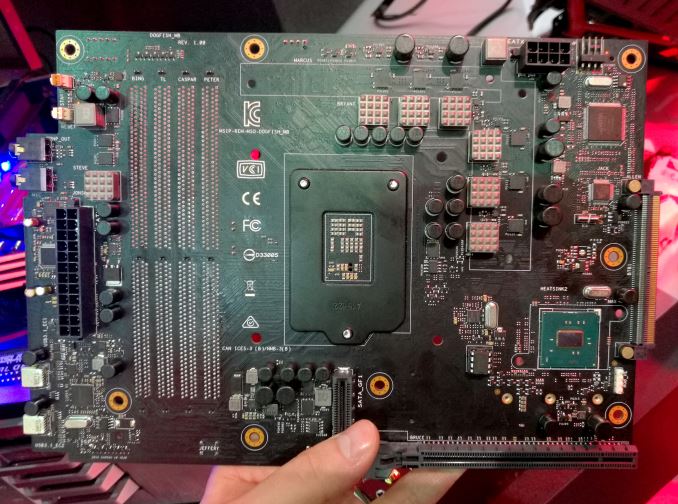
Click the image for the full resolution
Here we see more of what we know – power delivery chokes, a chipset, an 8-pin CPU power connector, a PCIe x16 connector and a 24-pin power connector. There are no SATA ports, and nothing on this system looks normal.
So, to explain: on the bottom near my finger is a custom connector, akin to a 4x PCIe connector, that breaks out into four SATA ports on a daughter board where are hot swappable on the chassis. The connector supplies both data and power. On the far right is a proprietary ASUS header for the rear IO.
At current, ASUS is not finalized on the pin layout and isn’t conforming to any particular standard, but this connector can send chipset PCIe lanes, digital video, and a few other things, over to a daughter board. This means one thing – adjustable rear IO panels!
I love this idea. Here are two examples of what ASUS suggests: the top one is a rear IO for workstation users, featuring dual Intel NIC and inside is a RAID capable M.2 slot running at PCIe 3.0 x4. The rear panel is a Home Theater focused design, using a single NIC and a USB 3.1 controller for 10 Gbps use. ASUS also had a VR edition with the specific ports required for the big VR headsets currently in the market. Because the custom connector carries enough PCIe, this opens it up to other custom designs, such as Thunderbolt, 10 Gbit Ethernet, different Ethernet/WiFi, additional storage, or anything that needs PCIe. Also, on the audio side, because this is a separate board, it could also influence audio capabilities and provide cleaner signals for audio processing. Adjustable rear IO is a topic only just being breached, with plenty of possibility.
Avalon's design is still very much fluid, with one GPU currently being supported:
I won’t go too much into Avalon here, as we were able to get some hands-on time with Jonathan Tseng, the product manager of Avalon, and do a quick teardown video after the show had finished. The audio on the video needs some cleaning up, and we’ll try and post that in due course. In the meantime, here’s a quick teardown video of the motherboard:
The video is silent
At this point the Avalon project is in an early design phase, so ASUS is looking for feedback with what they have so far. I don’t particularly mind if this ends up being an engineering concept design that never goes on sale (I’ve been pushing manufacturers to do more concept designs, similar to vehicle manufacturers at car shows), but the fact that ASUS are prepared to even attempt this is a good thing.


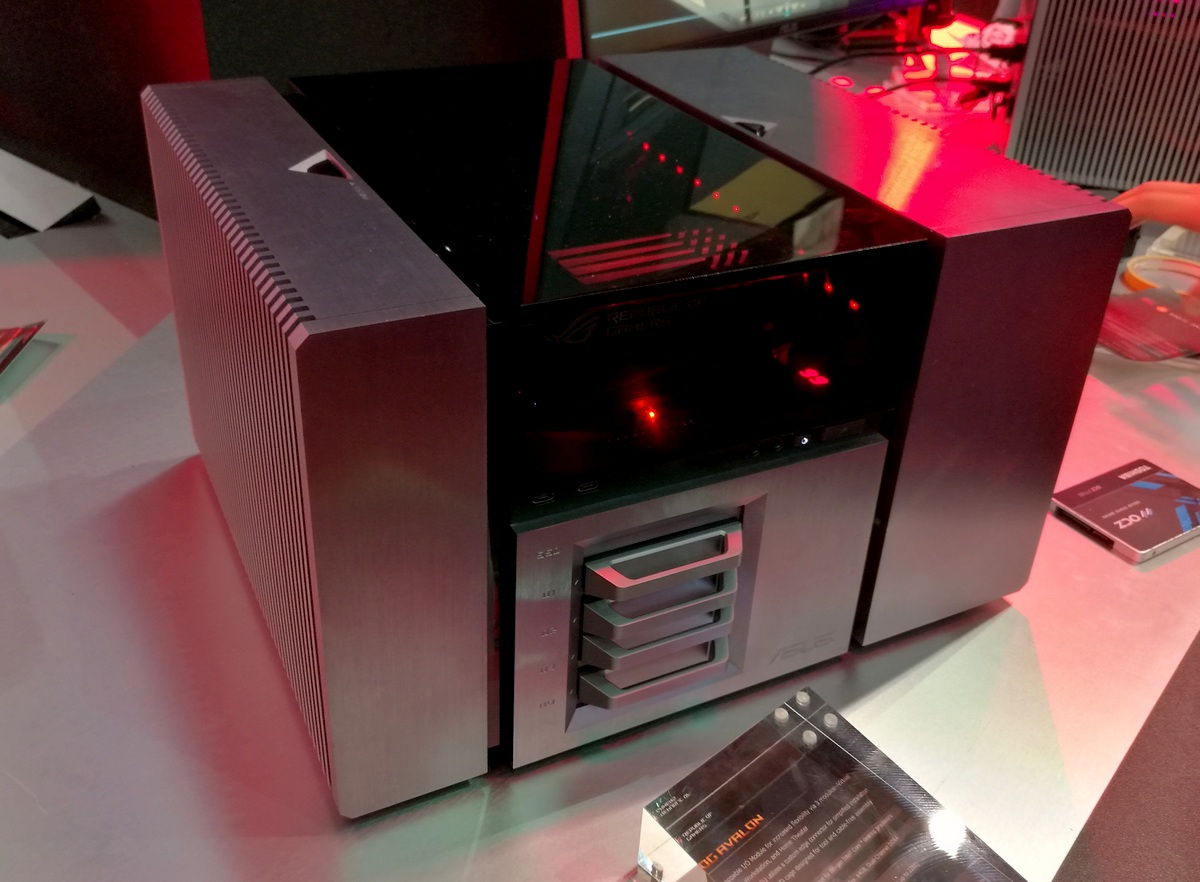
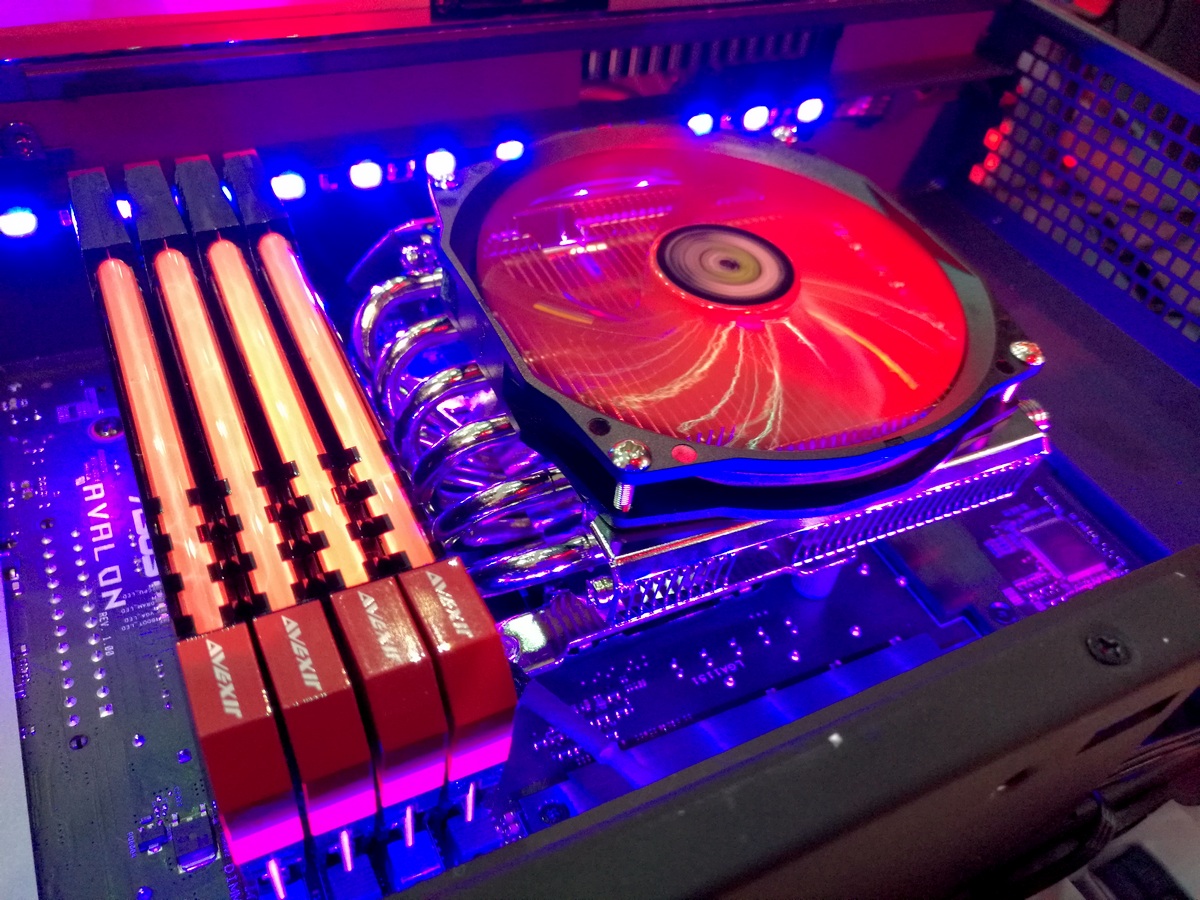
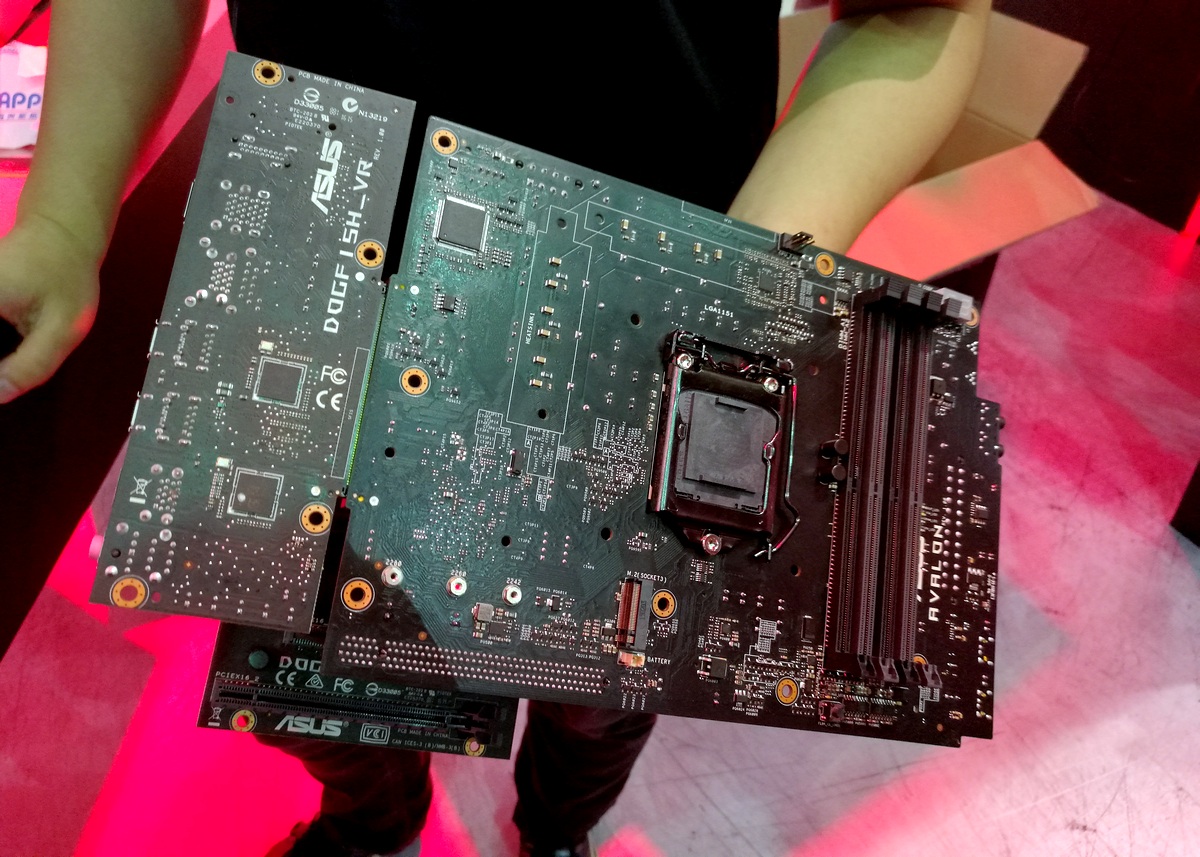

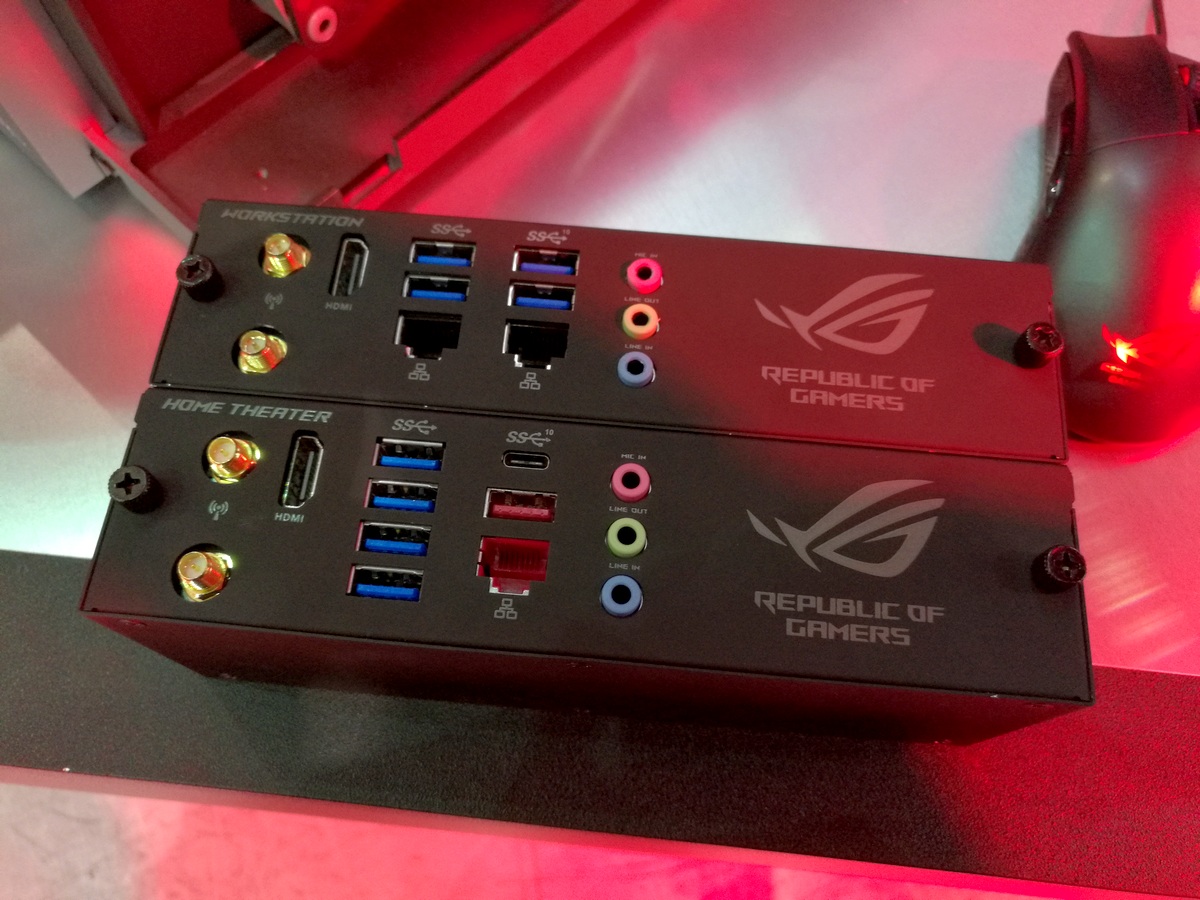
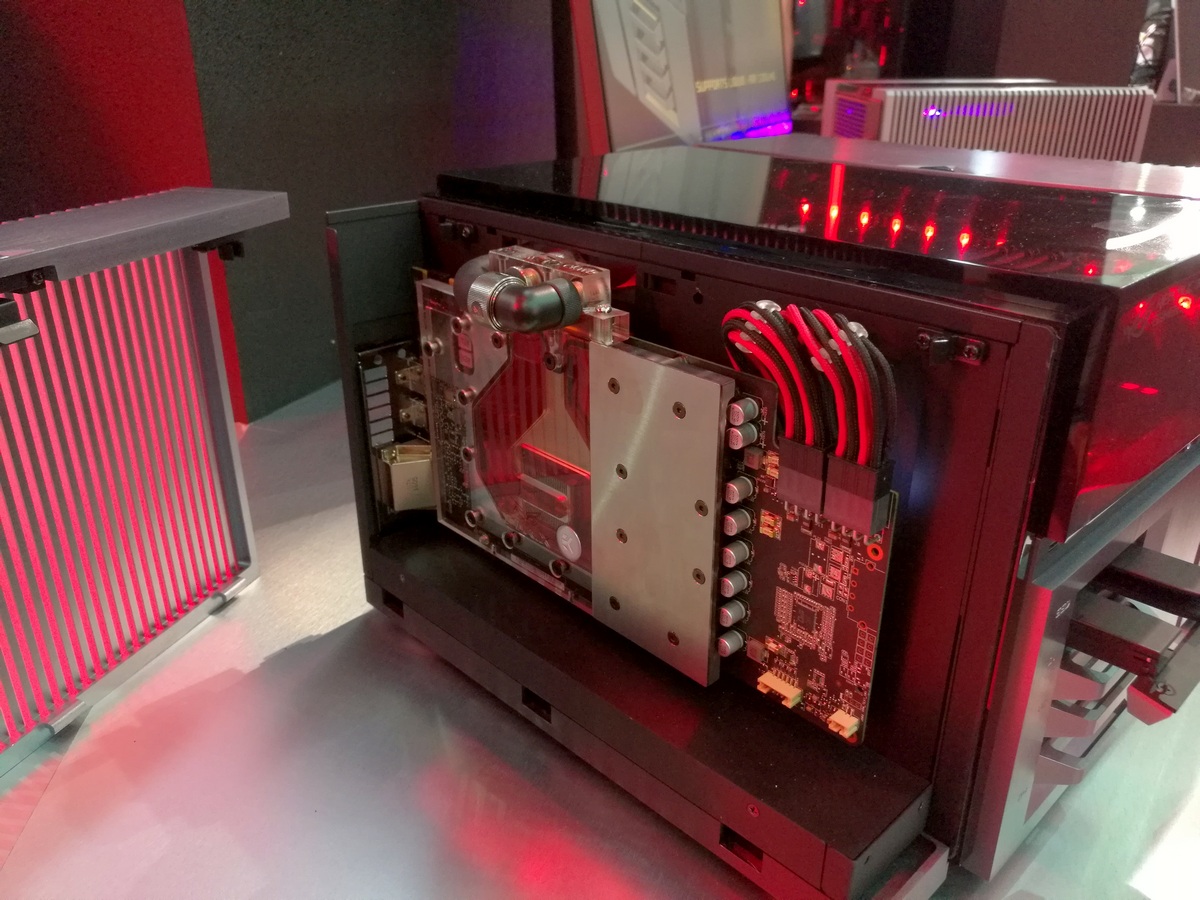








43 Comments
View All Comments
A5 - Wednesday, June 22, 2016 - link
End users who are buying Broadwell-E are almost always doing it for 3+ way SLI reasons, which pretty much forces you into full ATX.They presumably have research (or data from the past) that says they will not sell enough mATX boards with HEDT chipsets to be worth the engineering effort.
Bragabondio - Wednesday, June 22, 2016 - link
Well now that Nvidia would not support more than 2 cards SLI (except for benchmarking applications) the argument for 3 way SLI becomes moot. (micro ATX supports 2 way SLI). Starting to think we will be stuck with 4 core CPUs for the next 5+ years unless ZEN is a huge success.Sushisamurai - Wednesday, June 22, 2016 - link
uhhh... Nvidia still has 3 way/4 way SLI - they've only restricted SLI requirements to PCIe x8, versus AMD's crossfire x4; presumably to maintain a performance target. With "consumer" lines of Intel CPU's, you only get max 20 PCIe lanes (correct me if I'm wrong), allowing only 2 way SLI. HEDT chips have 28 to 40 to 40. Hence, 3 way to 4 way SLI is pretty much restricted purely to HEDT. Anandtech had an article about CPU/PCIe bottleneck with SLI/CF a ?few years back. If memory serves me correctly, PCIe x4 bottlenecks modern high end GPU's, and an i5 can run 2 high end GPU's without bottlenecking - it is when you go 3 cards you'll need an i7 for gaming (assuming you have enough lanes), and HEDT (my opinion now) if you want 4 cards (due to PCIe lanes, and enough cores to feed the cards)Bragabondio - Wednesday, June 22, 2016 - link
Correct until GTX 1070&1080 were introduced. Starting with the GeForce GTX 1080, Nvidia is discontinuing official support for 3-way and 4-way multi-GPU SLI setups.http://www.pcworld.com/article/3071332/hardware/it...
Sushisamurai - Thursday, June 23, 2016 - link
Oh that is messed up. I've read their white paper, didn't even know they trashed the enthusiast key option. Wow that's super unfortunate.alphasquadron - Wednesday, June 22, 2016 - link
"So I don't understand why manufacturers don't want my money?"I think they do but as stated in the article:
"The three major form factors for custom build personal computers, in order of popularity, are ATX, followed by micro-ATX and then mini-ITX."
I too am waiting for an external dock that I can plug my laptop into and achieve 80-90% of performance of a full size desktop. Whoever makes this will have grabbed two markets. Those who want a gaming desktop and are okay with huge cases (usually younger) and professionals like me who want the same but would never get a gigantic case. If we can get an external dock that tries to be compatible with most laptops as much as possible without looking like an eyesore and can deliver close to desktop performance, it would be an instant buy for a lot of people. As you now have a laptop and desktop. Though I think that this would come from a laptop manufacturer as if it was very well made and successful, I would think the market that would buy a desktop over a laptop for 10% gain in performance would be very small.
Bragabondio - Wednesday, June 22, 2016 - link
Guess I have to give my dream for small but super powerful desktop PC and embrace the reality that laptop/surface device + dock is the future for the middle aged professional :)Bragabondio - Wednesday, June 22, 2016 - link
One more thing. The ATX may be indeed most popular size but that is mostly due to tradition not function as 99% of the consumer market don't need/use all the slots and space of a larger ATX case. That is why I like project Avalon but nobody knows if it ever would become a reality.Ananke - Wednesday, June 22, 2016 - link
Unfortunately, in the current moment of the high tech industry, "middle age" is very inappropriate. Companies think their teen- and twenty-year old customers have many thousands of disposable income , and cater to them exclusively. Besides, young people buy easily obsolete or inferior tech, since they don't have comparison base :):). The only problem for the tech industry is, that younger population usually has no disposable income /and that's kinda universal truth over many centuries/ and just doesn't buy because it can't pay.Bragabondio - Wednesday, June 22, 2016 - link
well said Ananke! Plus, as a coup de grace now we have to deal with gazillion of RGB lights inside our cases - if I wanted a freaking X-mas tree inside my case I would have bought one ! :)